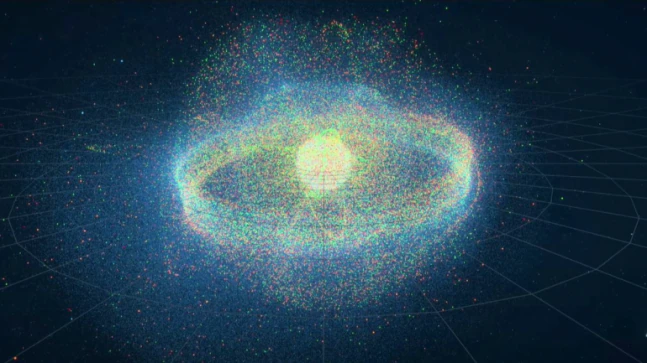In pursuit of technological advancement, the Low Earth Orbit (LEO) is increasingly becoming crowded as countries race to launch satellites into space. Today, there is more satellite debris than operational ones as we keep sending clusters after cluster to boost the advancement of the human race.
A report by the European Space Agency about the environment and safety of space says, “Our behaviours in space is unsustainable and if we continue at this pace, the number of objects in orbit will make it hard to safely operate in space at all.”
The report warns that behaviour in Low Earth Orbit are not changing fast enough and more than half of operators flying at this important altitude make no attempt to sustainably dispose of their missions. This is giving rise to an unimaginable volume of space junk that could prove detrimental to further missions, astronauts and spacecraft as countries push for further space exploration. Today, over 23,000 objects are tracked every minute to detect potential collisions with satellites and the International Space Station.
Also Read: From Chandrayaan-3 to Artemis, countries rush to Moon with a desire to stay

A large proportion of debris in orbit today are leftovers from just a couple of fragmentation events
Earth is launching more than ever
According to the ESA, the amount of debris in Low Earth Orbit is increasing from the number of objects launched to their overall mass and the area they take up. Since the launch of the first satellite, Sputnik, there has been a multifold increase in rockets and satellites being launched from across the world. Over the last few decades, there has been a change in the type of mission, with private companies launching smaller satellites than those launched by non-commercial agencies. Meanwhile, the number of unregistered objects has also increased.
With private companies coming into play, satellites are being launched into large constellations in order to provide communication services. SpaceX has been the leader, with its Starlink constellation sending 1000 small satellites to boost global internet connectivity. Several astronomers have complained about these massive launches and constellations blocking the Earth’s field of view of the universe, which is already a challenge owing to the thick atmosphere.

Commercial satellite sky-rocket in low-Earth orbit. (Graph: ESA)
Space operators not doing enough
With several countries funnelling billions of dollars into space missions, responsible exploration and management are key. China was recently in the news when its biggest rocket, Long March 5, started tumbling back towards Earth after the delivery of a critical component of its under-construction space station.
Also Read: China to send 3 astronauts to its under-construction space station for three months in June
While the rocket landed in the Indian Ocean last week, the bulk of its components was destroyed upon re-entry into the Earth’s atmosphere. The uncontrolled tumbling created a panic among nations, putting people and property in danger.
ESA, in its report, said, “More than half of space actors operating the non-compliant missions make no attempt to sustainably dispose of their missions. The numbers are gradually improving, but it is not fast enough.”
Modern space debris regulations demand that such incidents should not happen. Uncontrolled re-entries should have a less than 1 in 10,000 chance of injuring anyone on the ground.
An explosive past
A large proportion of debris in orbit today are leftovers from just a couple of fragmentation events, namely the infamous collision between satellites Cosmos-2251 and Iridium 33 in 2009 that created a huge cloud of debris.
Energy left undisposed onboard a satellite or rocket body can lead to explosions. Over the last two decades, the average number of fragmentation events has remained stable at roughly 12.5 per year. Abot 90 per cent of small payloads, below 10 kg in mass, reaching the end of their mission during the last decade operated in orbits that naturally adhere to the space debris mitigation measures.
Also Read: Launch of first unmanned mission of Gaganyaan is slated for December: Nirmala Sitharaman
However, a majority of larger payloads reaching the end of their mission during the last decade did so in orbits where they did not successfully remove themselves from.
With the launches and space missions becoming unsustainable, there is a critical need to look at mitigation efforts to make low earth orbit safer for further exploration.




